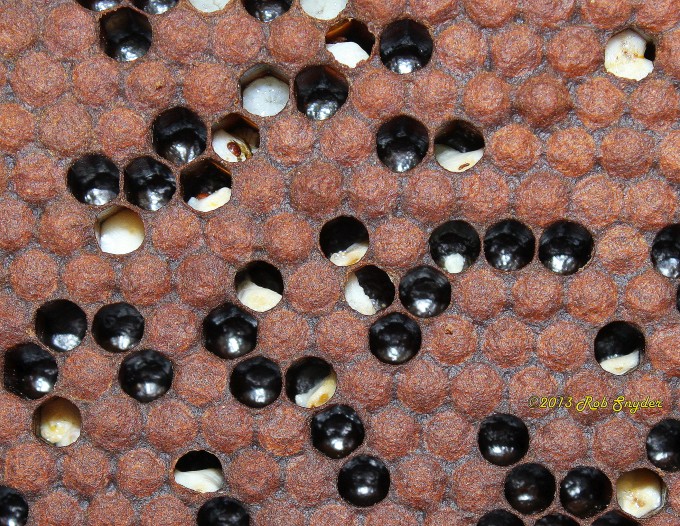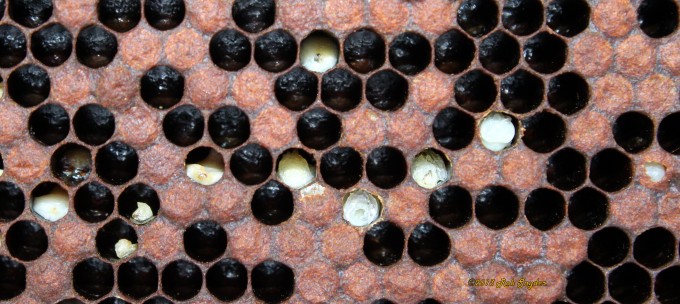Parasitic Mite Syndrome
Identifying Brood Diseases Pamphlet
Description
Parasitic Mite Syndrome (PMS) is a widely observed and yet often misdiagnosed disease. PMS is often confused for American foulbrood (AFB), European foulbrood (EFB), and sacbrood, as this is a disease that directly targets brood. Much is still unknown about PMS, including the causative agent, but more research is being conducted to understand the intricacies of this disease.
Etiology
The causative agent for Parasitic Mite Syndrome (PMS) is currently unknown. Incidence of PMS however, is highly correlated with the presence of Varroa mites. Signs of this disease include rapid decline of the adult population, increased supersedure, lack of eggs and developing larvae, and Varroa mites seen on both bees and comb. Bees are often seen crawling near the hive entrance and it is also common to see adult bees suffering from deformed wing virus as well. PMS directly affects brood of any age, unlike AFB and EFB. The brood pattern will be very spotty and the brood themselves will appear melted into the bottom of the cell. It is also common to see chewed down brood or prematurely opened cells, both of which are hygienic behaviors intended to abort the brood. Infected brood may become discolored and acquire a smell as secondary bacteria set in. Colonies left untreated for mites will eventually decline in population to the point of collapse.

Melted and discolored brood, some with Varroa mites (Photo courtesy of the Bee Informed Partnership)
Spread and Control
Currently, the only method known to help control Parasitic Mite Syndrome is to reduce the numbers of Varroa mites in a diseased colony. For more information about monitoring and controlling Varroa mite populations in a honey bee colony, please consult the Honey Bee Health Coalition’s Varroa management guide and videos.


